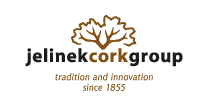Cork is one of the earth's most adaptable natural materials and has made countless contributions to human history, from traditional applications to new and innovative solutions to modern-day concerns. Unlike many other versatile materials, cork is a natural product that does not involve petroleum in its manufacturing, making it an appealing material for future development.
One of the most innovative uses for cork started in the early 19th century in North America with the advent of the ice trade. The global ice trade quickly grew into a booming operation. Cork's insulative properties made it an excellent choice for insulating ships, carriages, and eventually boxcars that transported ice from the frozen lakes to distribution and storage houses. The discovery of expanded insulation cork in 1891 further grew cork's role in the industry. Learn more about cork's role in early ice storage.
Another invention of the early 19th century was the first-generation modern flotation devices. These life jackets and life preservers were made of canvas and filled with granulated cork (also called cork grain). The honeycomb cellular structure helps to make cork an excellent floatation material - though not the most comfortable. Read more about cork life jackets.
Solid cork used in a vintage life preserver.
By the turn of the 20th century, cork may have fallen out of favor as a flotation material, but it was playing an integral role in the expansion of the industrial age. Cork gaskets allowed imperfect machinery to fit together, significantly increasing production. In addition to gaskets, cork was used to seal most liquid products, including the famous glass soda bottle. Learn more about cork's uses in the early 20th century.
The advent of the space age brought new opportunities to capitalize on cork's unique attributes, including its high burn temperature and thermal insulation. Cork was first used in a NASA mission, the Apollo 11 moon mission, and has since been used in every NASA space mission and other space applications, such as satellites. Find out more about how cork helped to launch the space age.
Outside of its insulator properties, cork has been used extensively in habitat creation, live shows, and film applications. From using granulated cork as fake dirt on sets and in enclosures to using cork in special-effect explosions, the possibilities of cork in these industries are endless. Learn more about the entertainment applications and exhibit applications for cork!
Cork used to create a beach on the set of Grown-ish
Jelinek Cork is proud to be a leader in cork innovations. We are excited to continue with the tradition of innovation using this natural marvel.


